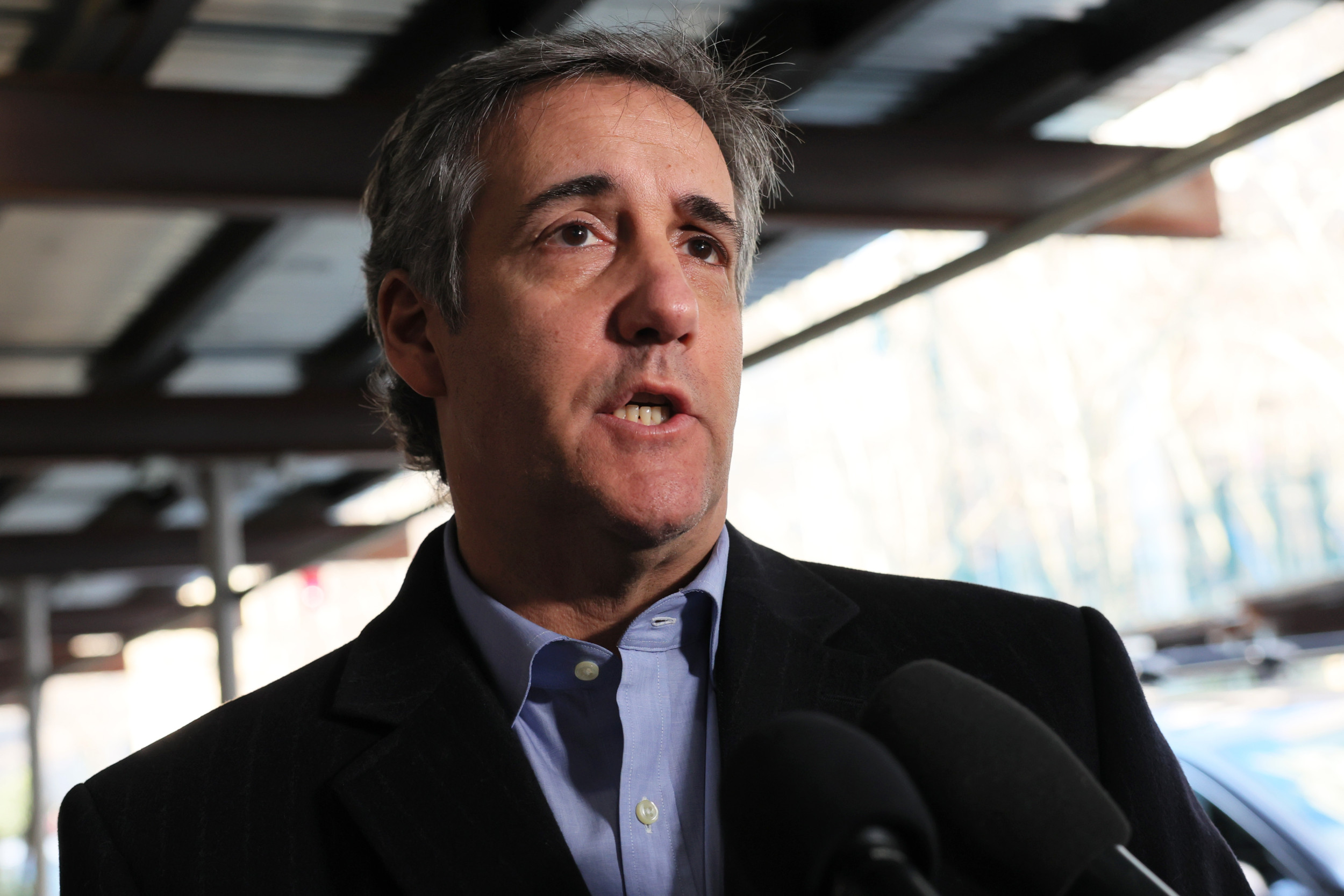In 2006 John Celmer's body began to break down. He was diagnosed with oral cancer and had to undergo surgery to remove the tumor and then radiation therapy to kill off any remaining malignant cells. The radiation ravaged his jawbone and the surrounding tissue, leaving a hole in his chin. Fluid leaked onto his clothes. His teeth began falling out. He had difficulty eating and speaking. As Celmer's jaw began severing from his face, doctors attempted moderate treatments, but all of them failed. So in 2008, they sought to reconstruct his chin and jaw using tissue from his chest and bone from his lower leg. The procedures appeared successful, but five days after the final operation, he was discovered dead in his Cumming, Ga., home.
At first everyone assumed he'd died of natural causes. Yet as Celmer's wife, Susan, sifted through his belongings, she discovered several things that puzzled her: a receipt for two helium tanks, a handwritten note referring to his need to acquire a "hood," an entry on his calendar (May 7, 2008: "Claire here @ 1:30") that mentioned someone she didn't know. Susan also found paperwork referencing something called Final Exit Network (FEN). As she later learned, it was an organization that counseled people with serious ailments on how to commit suicide. She shared her findings with police, who launched an investigation and eventually concluded that the group had helped Celmer kill himself. Susan was devastated—and enraged. What right did FEN have to help usher her husband to his death? "We are not the Creator," she told NEWSWEEK. "We do not give life and don't have the option to take life."
The man authorities say assumed that role is Dr. Lawrence Egbert. As FEN's medical director at the time of Celmer's death, he was the one who ultimately decided who the group would help end their lives. FEN is one of the most radical right-to-die organizations in the country. While most such groups advocate assisted suicide only for terminally ill patients, FEN's bar is lower. It's willing to help those who "have an incurable condition which causes intolerable suffering," according to its Web site—a requirement vague enough to potentially include people with many years left to live or with afflictions like depression. Egbert says the organization follows rigorous procedures to determine whether to approve an applicant, including examination of medical records and four levels of review. To those it accepts, FEN assigns "exit guides" which offer advice on how to "hasten death," but not physical help to do so. (FEN recommends filling a plastic bag, or hood, with helium and pulling it over one's head—a method that works quickly and leaves no trace in the body.) By not physically participating in the act, the group argues, it remains in compliance with the law, which in the vast majority of states prohibits assisting with a suicide. But the statutes are hazy on what exactly constitutes assistance.
As a result of the Georgia Bureau of Investigation inquiry into Clemer's death, Egbert and three other members of the group were indicted March 9 on charges of racketeering, assisting a suicide, and tampering with evidence (their arraignment is scheduled for April 1; Egbert will plead not guilty, says his lawyer). In a separate case, the Maricopa County Attorney's Office in Phoenix indicted Egbert and three additional FEN members last May for conspiracy to commit manslaughter (Egbert pleaded not guilty). Authorities in Florida also investigated a suicide that they suspected was linked to the group, but in the end, didn't file any charges.
Egbert is the only person charged in both Georgia and Arizona. An anesthesiologist by training, he says he reviewed every application FEN received during his tenure as medical director from 2004, when the group was founded, to 2009, when its legal troubles began (FEN halted its work last year, but resumed it in February). By his estimate, he approved about 80 percent of roughly 200 to 300 applications. At a time when assisted suicide is making headlines in the U.S. (Montana's Supreme Court recently ruled it legal) and abroad (the British are feverishly debating when it should be allowed), Egbert is a polarizing figure. Supporters hail him as a hero who offers the sick a measure of autonomy. Critics denounce him as a killer who assumes God-like powers and prods desperate people to their deaths. Yet these are caricatures. The man himself is far more complicated—passionate and devoted, but also inscrutable and, at times, unsettling.
White-haired and goateed, with a stilted gait and a gentle voice, Egbert, 82, comes across as a benign, somewhat befuddled grandfather. He doesn't own a car or a home computer or a cell phone. He tools around his city of Baltimore on a bicycle plastered with bumper stickers reading BIKES NOT BOMBS and DON'T WASTE OUR FUTURE, RECYCLE. He lives with his wife on a quiet, tree-lined street. Their home is filled with books and knickknacks gathered from sojourns in Iran, Japan, and Nicaragua. He's a member of the liberal Unitarian Universalist Church and has worked for groups such as Physicians for Social Responsibility. Until recently he taught a course on medical ethics at nearby Johns Hopkins University.
Egbert's outlook seems colored, above all, by a deep-seated libertarianism. At a speech on right-to-die issues before the Baltimore Ethical Society last year, he carried a stack of bookmark-sized copies of the Bill of Rights in his blazer pocket and handed them out after his presentation. He spent part of his talk railing against the Patriot Act, airport security protocols, and other perceived incursions on freedoms. In his view, an individual's control of his or her body is inviolable. "You can choose when, where, and how" you die, Egbert told NEWSWEEK, in one of numerous interviews over the past year. "It's a right to make decisions for your own life."
The role of the physician, he argues, is to reduce suffering. "When we can't help them fix the suffering, then we should help them get it over with," he says. That blunt statement puts him at odds with many doctors, whose profession has always emphasized curing and saving lives. Egbert, however, says, "I've never actually felt more like a doctor than [when I'm] doing this work." As FEN's medical director, he reviewed applications with essays that ranged from terse, single paragraphs to plaintive, 15-page testimonials. He had no set standard to guide him, but rather judged cases individually, taking patients at their word. "I'm looking to see that they have something potentially hopeless and miserable that they're unable to get proper care for," he says. He recalls approving one man with Lou Gehrig's disease who couldn't swallow because his throat muscles no longer functioned.
But many situations aren't clear cut. Egbert says he signed off on one woman with multiple sclerosis who wasn't in all that much pain but had a difficult time relieving herself. After a friend of hers made some alterations to the bathroom, she canceled her suicide plans. Then there are the cases involving mental illness. Egbert's indictment in Arizona involves a woman named Jana Van Voorhis, who suffered from borderline personality disorder and bouts of depression. She was also, it seems, becoming more psychotic. According to a police report, she believed she had holes in her belly, feet, and liver, and that someone had tried to poison her with pesticides. Egbert confirms that he read Van Voorhis's application and, after deliberating with other members of FEN's medical committee, decided that she should be assigned an exit guide; she killed herself in 2007. Because of his legal entanglement, Egbert declined to answer an obvious question: given Van Voorhis's condition, what convinced him she had the faculties to decide it was best to end her life?
For someone who has taught a medical-ethics course, he seems strangely averse to probing the ethical or moral dimensions of his work. Asked if he's ever made the wrong call on a FEN applicant, he replies, "I don't think so." But he adds: "We know we're human, we're guaranteed to make mistakes." Repeatedly pressed by a NEWSWEEK reporter on the issue, he snapped, "Aren't you tired of questions?"
The one moment when Egbert admits he feels doubt is when a patient is actually dying. He says he's witnessed numerous suicides: one lady who downed dozens of painkillers with a glass of Chardonnay, another woman whose husband injected her with morphine. Most, following FEN's suggestion, pulled helium-filled plastic bags over their heads. Each time Egbert has found the experience horrifying: "The person starts turning blue, they're gasping for breath ... it's scary. I'm nervous that they didn't make the right decision. I'm always thinking about that. 'Is this the right thing to do'?" Yet it's the patient's judgment that he questions—not his.
In Egbert's eyes, facilitating death for those who choose it is an exercise in compassion. He cites the parable of the Good Samaritan who stops to care for a man lying half dead at the side of the road. Those who have worked with him throughout the years say he was deeply empathetic and attentive with patients. He has been lauded for his work with Doctors Without Borders in Kosovo, Lebanon, and Sri Lanka. Egbert seems to revel in the accolades it generates. Many of his anecdotes about his career end with people applauding him, praising his righteousness, or saluting his pluck. "I get called a saint every now and then," he says. He admits, "I have a pretty big ego."
From the early days of his career, Egbert has pursued positions at prestigious institutions, then tilted at their authority. At the American University of Beirut, where he was chief of anesthesiology in the early 1970s, he claims he was fired after two years. One of the reasons, he says: he suggested a partnership with an Israeli institution. In 1977, he maintains, he was asked to leave Johns Hopkins after publishing research showing that black patients at its hospital were more likely to be treated by less-qualified surgeons (years later he was rehired there). He claims the University of Texas, where he taught for more than a decade starting in 1982, declined to renew his contract because of his activism against nuclear proliferation. "No system wants you if you're going to be deviant," says Egbert. (The universities confirm Egbert's employment but were unable to verify the circumstances under which he left.)
Despite his rebellious streak, he was highly regarded in his field. He conducted pathbreaking research on the anesthesiologist-patient relationship and published in top journals like the New England Journal of Medicine. One article about the importance of post-operative visits by anesthesiologists has been cited 771 times by other researchers. Egbert was also successful at securing grants, including one from the National Institutes of Health. Given the prestige and funding he could bring, many institutions were apparently willing to abide his recalcitrance, at least for a time. George Battit, who met Egbert in the 1960s at Massachusetts General Hospital and co-authored various papers with him, recalls that his colleague's activism rubbed some people the wrong way. "They'd say, 'Come on, Larry, why do you want to get involved in that'?" says Battit. But Egbert was "an outstanding human being whose primary interest was in his fellow human beings and their comfort and care."
In 1989 a Unitarian Universalist pastor in Dallas asked Egbert if he would help euthanize a parishioner racked by late-stage cancer; after much soul-searching, he agreed (though the suicide never happened). Soon afterward, Egbert joined the Hemlock Society, the pre-eminent right-to-die organization in the country at the time. In 1994 the group helped pass the nation's first law permitting physician-assisted suicide in Oregon. That achievement, however, helped deepen an ideological schism in the movement, says Ian Dowbiggin, a historian at Canada's University of Prince Edward Island. On one side were pragmatists who sought to temper their rhetoric to win more legislative victories, he explains; on the other were radicals, like Egbert, who wanted to assert a right to die more aggressively.
After a string of legislative defeats in subsequent years, the radicals became restless. In 2004, when the Hemlock Society decided to merge with another more moderate group to form Compassion & Choices, Egbert and a handful of others split off to form FEN. Members of the group say they don't assist suicide, but merely provide compassionate support.
The idea of someone gagging to death in a helium-filled hood is "ghoulish and frightening," says Kathryn Tucker, legislative director for Compassion & Choices. What's more, she and others say FEN is creating an unwelcome distraction at a time when the right-to-die movement finally has something to celebrate: passage of the nation's second physician-assisted suicide law in Washington state in 2008, and the Montana court ruling in December declaring the practice constitutional.
Those victories offer little consolation to Egbert, who's now awaiting his Georgia arraignment in April and the Arizona trial in August. He seems bewildered to be facing possible prison time at this stage of his life; his sentence on the Georgia charges alone could total 35 years. "It scares me," he confides.
Recently he gained a more intimate understanding of the issue he's devoted so much of his life to. Last October he had a serious bike accident and fractured his pelvis in two places. He's been in and out of the hospital ever since and taking morphine for pain, which has curbed his appetite and caused him to shed 30 pounds. The pain was so severe at times that he contemplated suicide. When he told his wife, she started to cry. In the end, he didn't go through with it. The experience didn't soften his conviction that assisted suicide is morally just. But it drove home how desperate patients can become—and how devastating the consequences can be should they choose to hasten their final exit.
Uncommon Knowledge
Newsweek is committed to challenging conventional wisdom and finding connections in the search for common ground.
Newsweek is committed to challenging conventional wisdom and finding connections in the search for common ground.
About the writer
To read how Newsweek uses AI as a newsroom tool, Click here.






